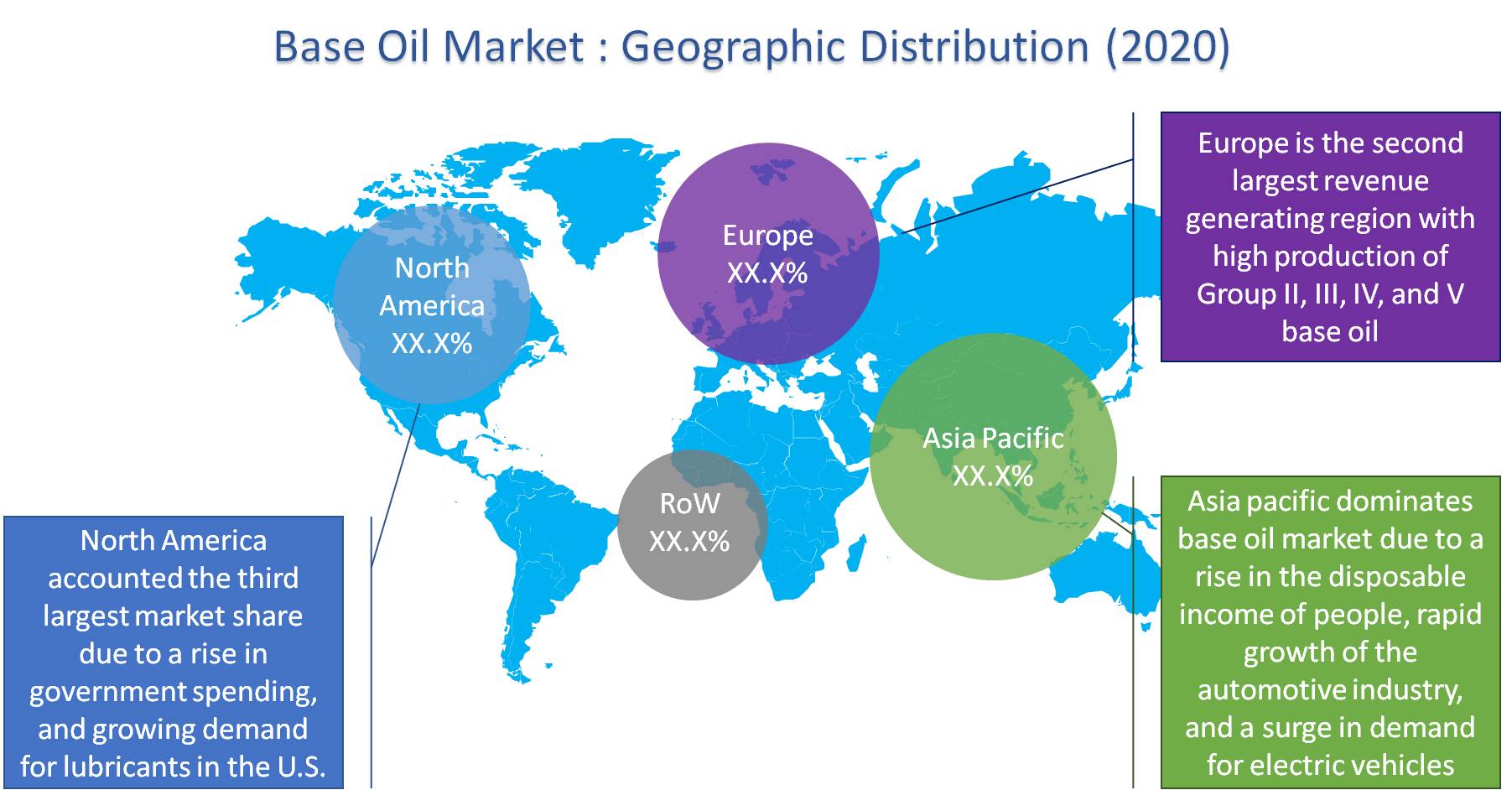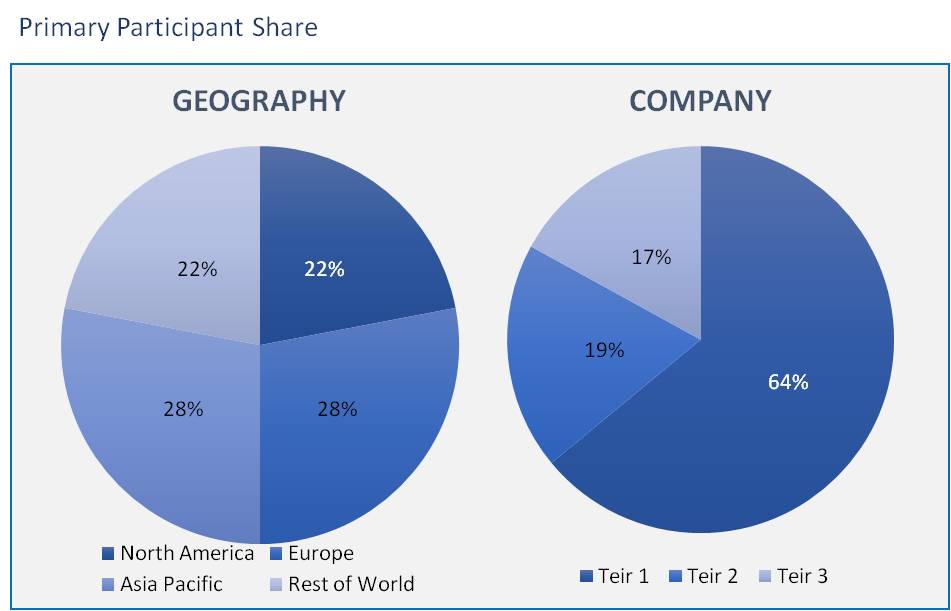
Base Oil Market: Based on Type (Group I, II, III, IV, V), Application (Automotive Oil, Industrial Oil, Metalworking Fluids, Hydraulic Oil, Greases, and Others), Geography (North America, Europe, Asia-pacific, and Rest of World), size, key players, trend and opportunities- Forecast up to 2026
- September, 2020
- Domain: Chemicals, Materials & Food - Petrochemicals
- Get Free 10% Customization in this Report
The base oil is extracted from heating the crude oil, and the process is known as refining and is subject to a required set of specifications. The base oil is characteristically termed as lubricant base stock. The quality of a lubricant depends on the type of base oil used and the method of production used to produce the base oil. It is critical toward the grade of lubricant as base oils usually make up to 70-97% of the formulation of lubricants. Volatility in prices of crude oil restraints the base oil market with the potential disruption in the supply of oil and gas by events affecting the prices of crude oil. These include geopolitical and weather-related issues. For example, the Middle East, which has a prominent market share in the oil and gas industry but is highly volatile due to political issues. Since crude oil is a raw material directly used to produce base oil, price fluctuation is directly reflected in base oil prices. Global Base Oil Market was predicted to reach $44.3 billion by 2026 from $41.7 billion in 2020, recording a CAGR of 1.0% during the forecast period.

Base Oil Market Key Segments:
By Type
- Group I
- Group II
- Group III
- Group IV
- Group V
By Application
- Automotive Oil
- Industrial Oil
- Metalworking Fluids
- Hydraulic Oil
- Greases
- Others
By Geography
- North America
- Europe
- Asia-Pacific
- Rest of World
Research Methodology:
The base oil market has been analyzed by utilizing the optimum combination of secondary sources and in-house methodology, along with an irreplaceable blend of primary insights. The real-time assessment of the market is an integral part of our market sizing and forecasting methodology. Our industry experts and panel of primary participants have helped in compiling relevant aspects with realistic parametric estimations for a comprehensive study. The participation share of different categories of primary participants is given below:

Growth in Demand for Group II, and III Base Oils
- In the last few years, demand for Group I base oils have been decreasing regularly, and the production volume for Group II, III, and IV oils has been proliferating.
- The rise in Demand for high-solvency power-based oils is high in various industrial applications, where solvency is crucial. The lubricant industry needs high viscosity plus high solvency due to the requirement for high additive load in preparations. Group I paraffin has low solvency power; therefore, the demand for Group 1 base oil demand is decreasing.
- In addition, Group II, III, and IV oils have higher solvency power than that of Group I oils. Thus, Group II and III base oils are preferable for use in the formulation of lubricants, specifically for passenger cars, heavy-duty vehicles, and automatic transmission engines. This, in turn, would uplift the global base oil market during the forecast period.
Automotive Fluids Consisted of a Significant Share
- Based on the application, the global base oil market has been segmented into automotive fluids, industrial oils, metalworking fluids, hydraulic oils, greases, and others. The automotive fluids segment consisted of a significant share of the global base oil market in 2019. Base oils are widely used to manufacture lubricants in the automotive industry. Lubricants have a significant role in the automotive engine, transmission, and steering mechanisms by minimizing friction and heat generation.
- Hydraulic oils are another significant segment of the global base oil market and are widely used in excavators, backhoes power steering systems, transmissions, garbage trucks, aircraft flight control systems, and brakes. These provide excellent thermal low pour points, high viscosity index, oxidation stability, and superior heat transfer.
The Asia Pacific Dominates Base Oil Market
- In 2019, the Asia Pacific was the dominant region in the global base oil market. The demand for base oil is likely to increase at a significant stride during the forecast period due to a rise in the disposable income of people, the rapid growth of the automotive industry, and a surge in demand for electric vehicles in the region.
- The second-largest market oil market is Europe. Due to a rise in government spending and stringent government norms for CO2 emission. The development of making high performance lubricants using base oil is considered to surge the base oil demand in European countries.
The Key Players
Exxon Mobil Corporation, Chevron Corporation, Royal Dutch Shell plc, Calumet Specialty Products Partners, L.P., Neste Oil, AVISTA OIL AG, Nynas AB, Repsol S.A., Eegon, Inc., GS Caltex Corporation, and Hindustan Petroleum Corporation Limited, Saudi Aramco, PetroChina Company Limited, and Abu Dhabi National Oil Company are few leading players operating in the base oil market.
1. Executive Summary
2. Market Positioning
2.1. Industry Snapshot
2.1.1. Overview
2.1.2. Key Trends
2.2. Related Markets
3. Market Outlook
3.1. Overview
3.2. Value Chain
3.3. Pest Analysis
3.4. Porter Five Forces
3.5. Patent Analysis
3.6. Regulatory Framework
3.7. Pricing Analysis
4. Market Characteristics
4.1. Market Segmentation
4.2. Market Dynamics
4.2.1. Drivers
4.2.2. Restraints
4.2.3. Opportunities
4.3. DRO - Impact Analysis
5. Application: Market Size & Analysis
5.1. Overview
5.2. Automotive Oil
5.3. Industrial Oil
5.4. Hydraulic Oil
5.5. Grease
5.6. Metalworking Fluid
5.7. Others
6. Type: Market Size & Analysis
6.1. Overview
6.2. Group I
6.3. Group II
6.4. Group III
6.5. Group IV
6.6. Group V
7. Competitive Landscape
7.1. Competitor Comparison Analysis
7.2. Market Developments
7.2.1. Mergers and Acquisitions, Legal, Awards, Partnerships
7.2.2. Product Launches and execution
8. Company Profiles
8.1. Royal Dutch Shell PLC
8.1.1.1. Overview
8.1.1.2. Product Offerings
8.1.1.3. Geographic Revenue
8.1.1.4. Business Units
8.1.1.5. Developments
8.1.1.6. Business Strategy
8.2. Saudi Armaco
8.2.1.1. Overview
8.2.1.2. Product Offerings
8.2.1.3. Geographic Revenue
8.2.1.4. Business Units
8.2.1.5. Developments
8.2.1.6. Business Strategy
8.3. Neste Oil
8.3.1.1. Overview
8.3.1.2. Product Offerings
8.3.1.3. Geographic Revenue
8.3.1.4. Business Units
8.3.1.5. Developments
8.3.1.6. Business Strategy
8.4. Avista Oil AG
8.4.1.1. Overview
8.4.1.2. Product Offerings
8.4.1.3. Geographic Revenue
8.4.1.4. Business Units
8.4.1.5. Developments
8.4.1.6. Business Strategy
8.5. Nynas AB
8.5.1.1. Overview
8.5.1.2. Product Offerings
8.5.1.3. Geographic Revenue
8.5.1.4. Business Units
8.5.1.5. Developments
8.5.1.6. Business Strategy
8.6. Petronas
8.6.1.1. Overview
8.6.1.2. Product Offerings
8.6.1.3. Geographic Revenue
8.6.1.4. Business Units
8.6.1.5. Developments
8.6.1.6. Business Strategy
8.7. Repsol
8.7.1.1. Overview
8.7.1.2. Product Offerings
8.7.1.3. Geographic Revenue
8.7.1.4. Business Units
8.7.1.5. Developments
8.7.1.6. Business Strategy
8.8. Lotos Oil Sp. Z O.O
8.8.1.1. Overview
8.8.1.2. Product Offerings
8.8.1.3. Geographic Revenue
8.8.1.4. Business Units
8.8.1.5. Developments
8.8.1.6. Business Strategy
8.9. Ergon Inc.
8.9.1.1. Overview
8.9.1.2. Product Offerings
8.9.1.3. Geographic Revenue
8.9.1.4. Business Units
8.9.1.5. Developments
8.9.1.6. Business Strategy
8.10. Calumet Specialty Products Partners L.P.
8.10.1.1. Overview
8.10.1.2. Product Offerings
8.10.1.3. Geographic Revenue
8.10.1.4. Business Units
8.10.1.5. Developments
8.10.1.6. Business Strategy
9. Companies to watch
9.1. Exxon Mobil Corporation
9.1.1. Overview
9.1.2. Market
9.1.3. Business Strategy
9.2. Ergon, Inc
9.2.1. Overview
9.2.2. Market
9.2.3. Business Strategy
9.3. Total S.A.
9.3.1. Overview
9.3.2. Market
9.3.3. Business Strategy
9.4. H&R Ölwerke Schindler GmbH
9.4.1. Overview
9.4.2. Market
9.4.3. Business Strategy
9.5. Chevron Corporation
9.5.1. Overview
9.5.2. Market
9.5.3. Business Strategy
9.6. G.S. Caltex Corporation
9.6.1. Overview
9.6.2. Market
9.6.3. Business Strategy
9.7. Hindustan Petroleum Corporation Limited
9.7.1. Overview
9.7.2. Market
9.7.3. Business Strategy
9.8. Petrochina Company Limited
9.8.1. Overview
9.8.2. Market
9.8.3. Business Strategy
9.9. Abu Dhabi National Oil
9.9.1. Overview
9.9.2. Market
9.9.3. Business Strategy
9.10. SK-Pertamina
9.10.1. Overview
9.10.2. Market
9.10.3. Business Strategy
10. Analyst Opinion
11. Annexure
11.1. Report Scope
11.2. Market Definitions
11.3. Research Methodology
11.3.1. Data Collation and In-house Estimation
11.3.2. Market Triangulation
11.3.3. Forecasting
11.4. Report Assumptions
11.5. Declarations
11.6. Stakeholders
11.7. Abbreviations
Research Framework
Infoholic research works on a holistic 360° approach in order to deliver high quality, validated and reliable information in our market reports. The Market estimation and forecasting involves following steps:
- Data Collation (Primary & Secondary)
- In-house Estimation (Based on proprietary data bases and Models)
- Market Triangulation
- Forecasting

Market related information is congregated from both primary and secondary sources.
Primary sources
involved participants from all global stakeholders such as Solution providers, service providers, Industry associations, thought leaders etc. across levels such as CXOs, VPs and managers. Plus, our in-house industry experts having decades of industry experience contribute their consulting and advisory services.
Secondary sources
include public sources such as regulatory frameworks, government IT spending, government demographic indicators, industry association statistics, and company publications along with paid sources such as Factiva, OneSource, Bloomberg among others.
